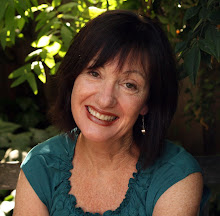Back in J-school, we were required to take a class in Precision Journalism in which we learned how to conduct surveys and polls, how to interpret them, and how to write about them. It was tons of work and I'll be honest. Everyone of us hated the class in every possible way.
But what I learned lingered. Which is why i am, er, perseverating on the "white women" poll. A couple of quick linx might help put those -- and other -- polls in perspective.
First, some background: NYU journalism professor Jay Rosen writes about political reporting in general, and herd reporting in particular. He also discusses the "horse race" narrative in political reporting.
Second, some quick rules on writing about polls from the American Association for Public Opinion Research.
Third, Sheldon R. Gawiser, Ph.D. and G. Evans Witt, cofounders of the Associated Press/NBC News Poll, layout "20 questions a journalist should ask about poll results." (Some of you may recognize some of these questions from comm 40.)
Finally, University of Wisconsin political scientist Charles Franklin, co-developer of Pollster.com, talks on polling techniques and issues on Minnesota public radio. A little dull, a little dry -- we're talking numbers, after all -- but informative nonetheless.
You also might want to check out the link in Andrea's comment on yesterday's post. It offers a different perspective on the white women phenomenon. That's all. bk
Thursday, September 11, 2008
Subscribe to:
Post Comments (Atom)






1 comment:
Pretty important stuff. I'd argue journalists should be learning how to interpret many types of numbers. And if I hear one more of my colleagues say he or she "doesn't deal with numbers," I'm going to buy them a statistics book myself.
Statistics in general may seem boring, but it's certainly helped me in my reporting, particularly with database work. We're sort of beyond the point when we can always round up a couple of quotes to support something and move on. Best practice is to get data, and run certain statistics (variance, regression) to confirm trends or causality.
Besides, in this era of "media bias," concrete statistics, especially on bigger, investigative stories, leaves more bulletproof copy on the front page.
Post a Comment